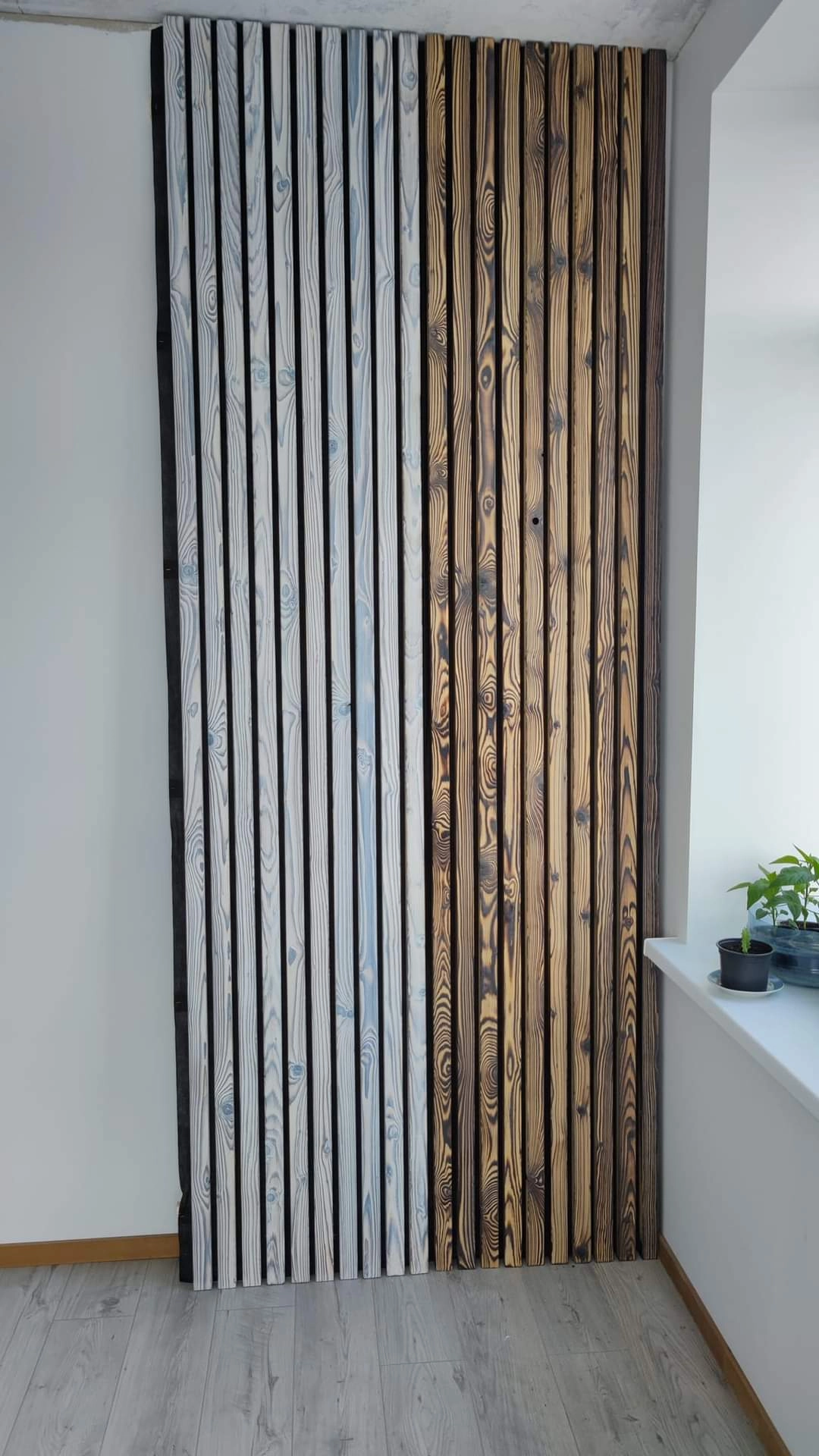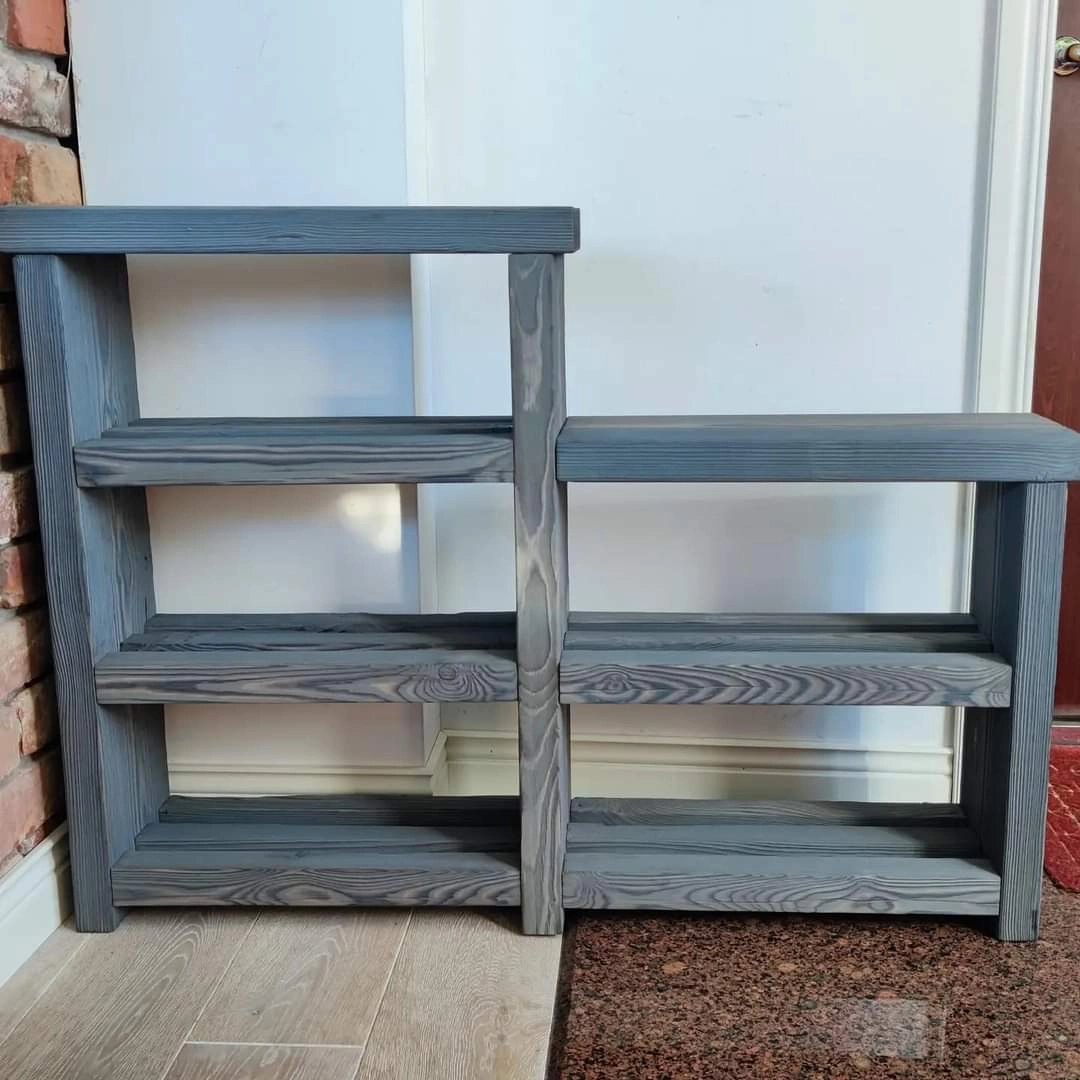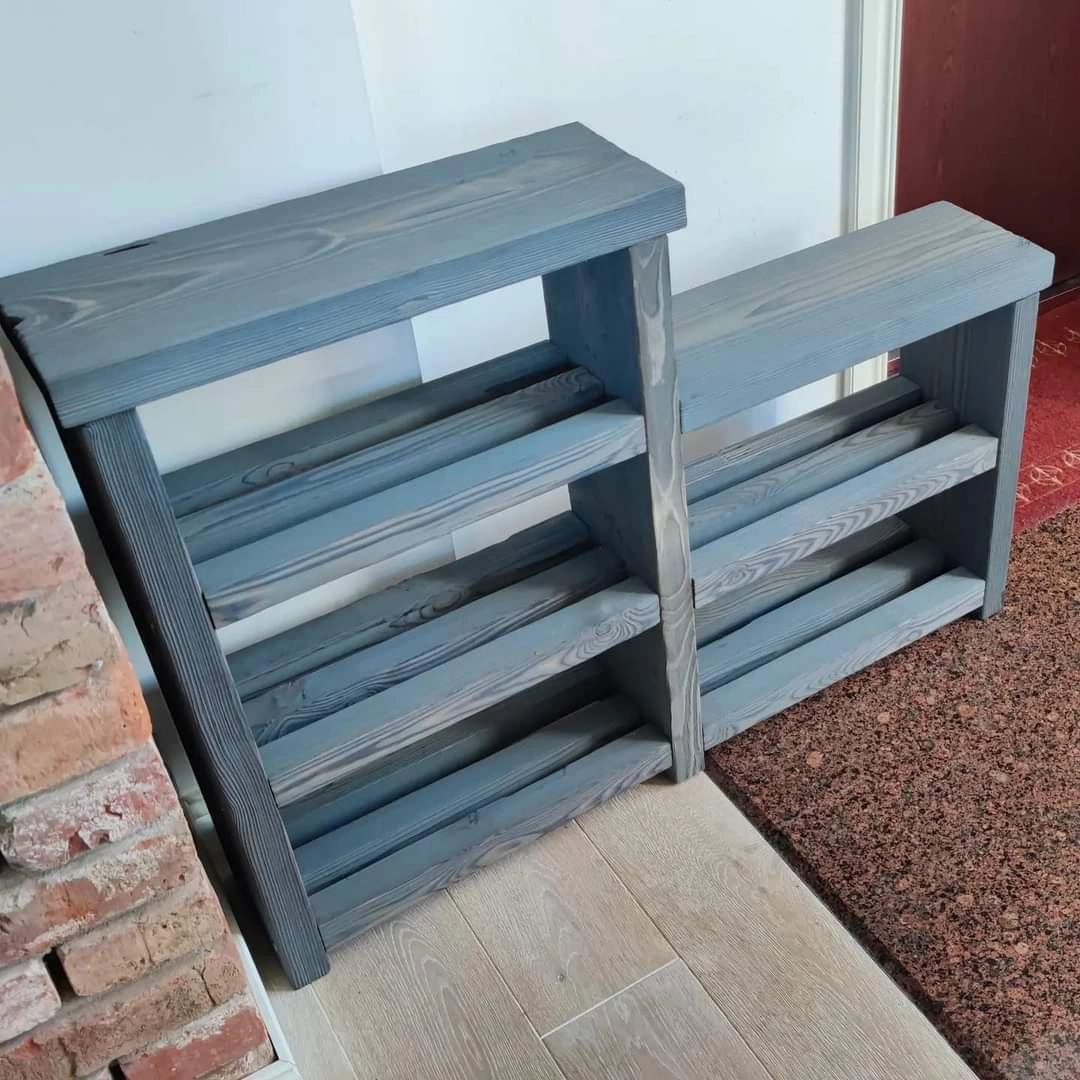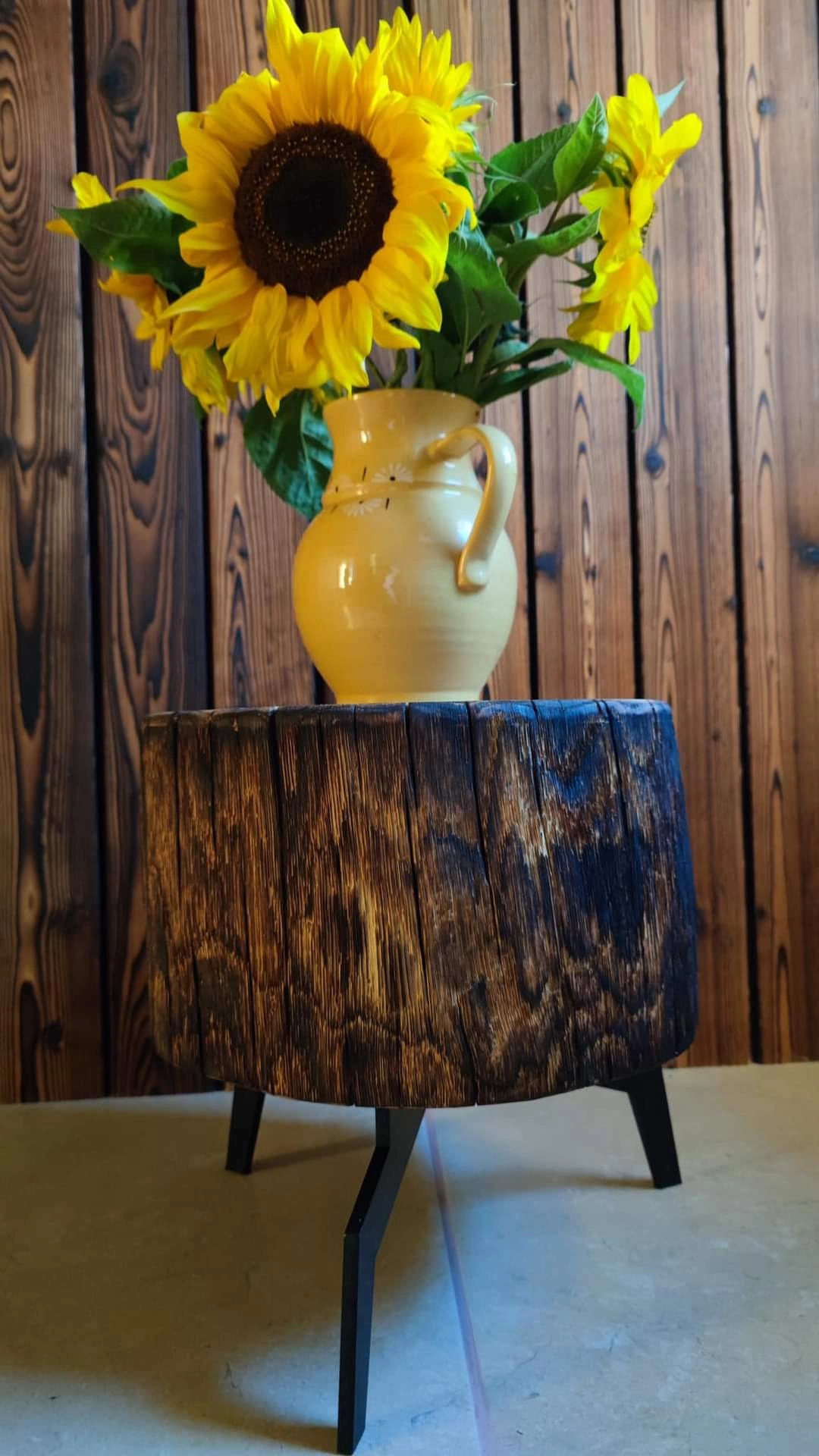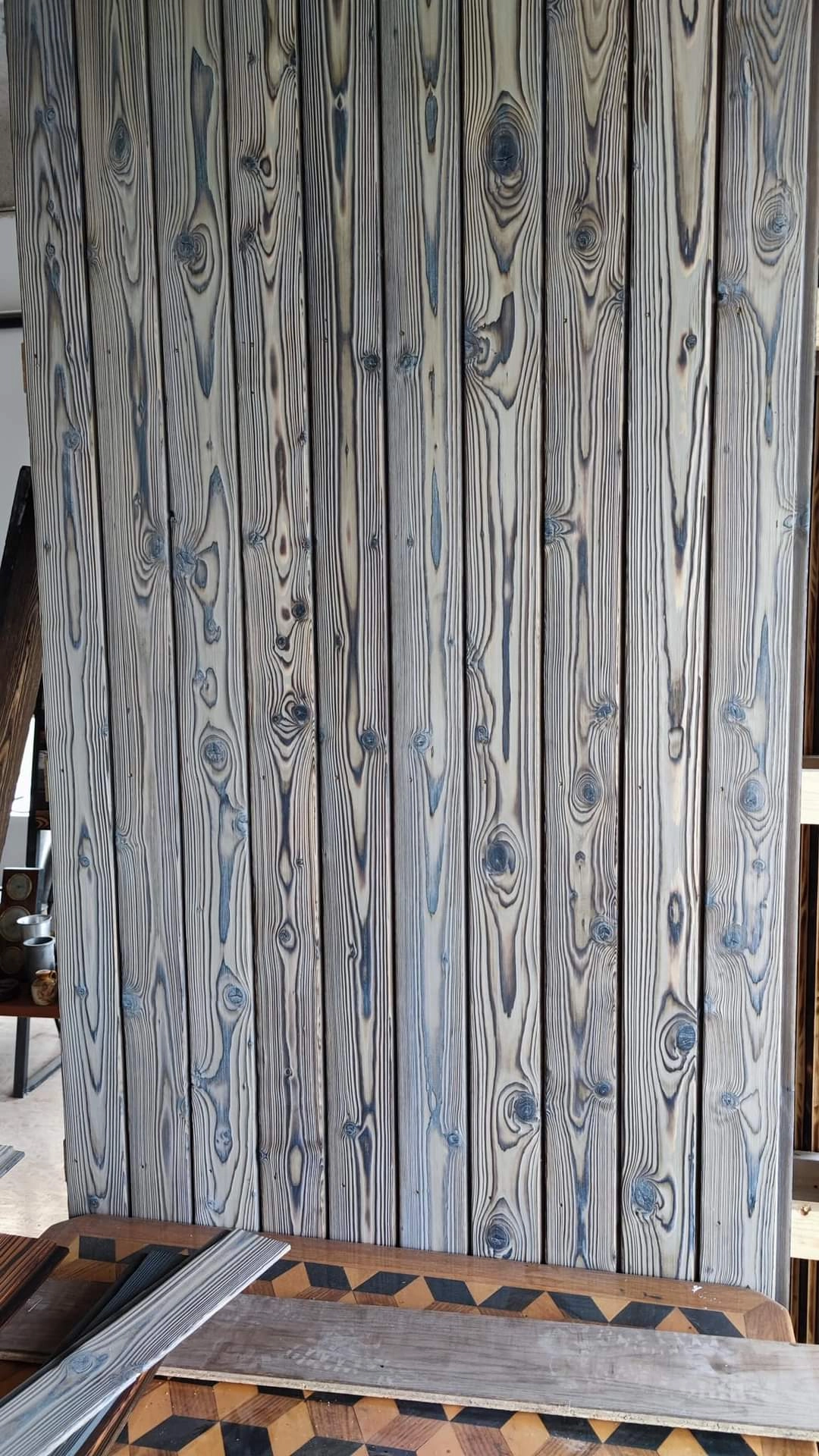Burnt Wood Cladding for Interior
Burnt wood cladding, or Yakisugi or Shou Sugi Ban, is an extremely ancient Japanese technique that is experiencing a resurgence in modern interior design. This unique process of burning wood not only makes it stronger and longer-lasting but also creates a visually striking appearance that can remake any interior space. If you are searching for an exclusive and sophisticated design element that combines the natural beauty of nature and high-performance functionality, burnt wood cladding is perhaps the best solution.
What is Burnt Wood Cladding and Why Choose it for Interiors?
Burnt wood cladding is a timber finishing process where the wood surfaces are intentionally burnt. Using burnt wood cladding for interior purposes offers an ideal blend of aesthetic appeal and functional advantages. It is a process derived from Japanese methods that enhances the natural attractiveness of the wood with increased durability as well as a dramatic textural component to interior design. It is the ideal choice for anyone who needs a sophisticated, eco-friendly, and long-lasting interior finish.
Burnt wood cladding, also known as Yakisugi in the past in Japan, involves charring the exterior of wood planks with care. The process, typically with cedarwood, transforms the outer layer of the wood to produce a fire-resistant, pest-resistant, and rot-resistant carbonized surface. Beyond its protective qualities, the charring process accentuates the wood grain, resulting in a deep, textured appearance that brings depth and character to interior walls, ceilings, and accent details. The aesthetic versatility of burnt wood is such that it can be employed alongside an enormous proportion of interior designs, ranging from minimalist and contemporary to rustic and traditional, thereby qualifying it as a desirable material among designers as well as home owners.
What are the Main Advantages of Having Burnt Wood Cladding Internally?
Burnt wood cladding has several key advantages for interior applications, ranging from greater durability to aesthetic versatility. Most significant are its overall resistance to fire, insects, and rot, coupled with a unique visual attractiveness that lends class and character to any environment. On top of this, it is an environmentally friendly option because it is long-lasting and wood is a renewable material.
1. Enhanced Durability: Chartering imbues the wood with a fire-resistant carbon coating that enhances the wood's resistance to fire, rot, and insect damage. This considerably extends the cladding's life, reducing the frequency of regular replacements.
2. Rare Aesthetic Beauty: Burnt wood offers a rare and very attractive aesthetic. The charred exterior highlights the wood grain, leaving deep textures and tones that bring depth and personality to interiors.
3. Low Maintenance: Burnt wood cladding requires minimal maintenance once it is installed. The weathered and worn surface of charred wood naturally occurs, so no need to continually paint or seal it.
4. Eco-Friendly Option: Wood as a material is renewable, and if done correctly, burning it is also an environmentally friendly option. The longevity of burnt wood is an environmentally friendly option through minimizing the use of materials in the long run.
5. Design Use Versatility: Burnt wood cladding can be used in various interior applications, from accent walls and ceilings to furniture and ornamentation, and easily fit into a wide range of design schemes.
6. Improved Insulation: The charred layer can provide some degree of thermal insulation, which can help keep the indoor temperature constant and even reduce the energy bill.
7. Sound Absorption: Burnt wood's smoky surface might assist in constructing improved acoustics in an area through the absorption of sounds, thus placing it perfectly to be used where sound reduction is required.
Where Can You Utilize Burnt Wood Cladding in Interior Rooms?
Burnt wood cladding is highly adaptable and can be utilized throughout numerous interior spaces to create a variety of different effects. Its unique appearance and practical benefits make it perfectly suited for accent walls, ceilings, flooring, and even bespoke furniture items, allowing creative integration into diverse schemes of design. From residential dwellings to corporate entities, burnt wood may add ambiance and include an air of sophistication.
1. Accent Walls: Burnt wood cladding also excels as an accent wall, a focal point in living rooms, bedrooms, or corridors. The strong texture and color contrast will bring depth and visual interest to otherwise flat walls.
2. Ceilings: Using burnt wood on ceilings can warm up a space and give it a sense of enclosure. It is especially well suited for high-ceilinged rooms, giving a cozy and intimate feel.
3. Flooring: Though not as trendy, burnt wood can be used for flooring in low-traffic areas. Its durability makes it an ideal candidate for this application, offering a unique and rugged flooring material.
4. Fireplace Surrounds: Because of its fireproof properties, burnt wood cladding is an excellent choice for fireplace surrounds. It gives a rustic but elegant touch to the hearth area.
5. Backsplashes and Kitchen Islands: Burnt wood can be incorporated into kitchen design as island or backsplash cladding, adding natural texture and warmth to a work area.
6. Decorative Pieces and Furniture: Besides cladding, burnt wood can be used to make unique furniture pieces, such as coffee tables, benches, or shelving units, and decorative pieces like wall art or lighting fixtures.
7. Commercial Spaces: Burnt wood cladding used in restaurants, retail spaces, and offices can provide a luxurious and inviting atmosphere to the space, making it unique in its visual appeal.
How is Burnt Wood Cladding Installed Indoors?
Mounting charred wood cladding inside is a simple process, similar to mounting traditional wood cladding. Proper preparation and secure mounting are the keys to a professional and durable finish.
Whether you are a seasoned DIY enthusiast or like to have it professionally installed, understanding the process ensures the best outcome for your interior project.
1. Surface Preparation: The wall or ceiling surface should be washed, dried, and level. Clear obstructions and coverings from the wall. Where surfaces are uneven, fitting furring strips to give an even surface on which cladding can be fixed is an appropriate choice.
2. Acclimatization: Allow the burnt wood cladding to acclimatize to indoor conditions for a few days before fixing. It avoids warping or moving after fixing when temperature and humidity changes take place.
3. Cutting and Fitting: Cut the wood planks to size and fit the area specified. Make precise cuts using proper woodworking tools. Plan the layout to waste as little as possible and give the desired appearance pattern.
4. Attachment Methods:
- Nailing or Screwing: Most commonly, this is accomplished by nailing or screwing the cladding to the wall studs or furring strips. Install with finishing nails or screws countersunk for a finished look.
- Adhesive: Construction adhesives may be used in combination with nails or screws, or in some cases, as the primary fixing system for lighter planks on smooth surfaces.
- Clip Systems: Some burnt wood cladding systems are clip-installed, which provides a concealed fixing solution and can simplify installation.
5. Jointing and Spacing: Select the desired jointing type – butt joints, shiplap, or tongue and groove. Use consistent spacing between planks if a spaced appearance is wanted. Use spacers to make uniform gaps.
6. Finishing Touches: Once the cladding has been installed, inspect for imperfections. Any nail holes and small damage must be filled in. While burnt wood is generally left unsealed, a clear sealant may be applied for added protection where there is a lot of moisture, like in the kitchen and bathroom.
Is Burnt Wood Cladding Special Care Inside?
Burnt wood cladding is very low maintenance for interior use. Its natural toughness, along with the charring process, minimizes the need for frequent maintenance. Routine cleaning and periodic check-up are generally sufficient in keeping burnt wood cladding in top shape for decades to come.
1. Regular Dusting: Dust the burnt wood cladding periodically with a soft cloth or brush to remove surface dust and debris. This is typically the only routine maintenance required.
2. Occasional Cleaning: For deeper cleaning, use a slightly damp cloth. Avoid excessive moisture, which can damage any wood finish over time. For stubborn stains, a mild wood cleaner can be used sparingly.
3. Inspection for Damage: Periodically inspect the cladding for signs of damage, such as scratches or impacts. While charred wood is durable, physical damage can occur.
4. Touching Up Minor Damage: Minor scratches can occasionally be touched up with wood stain or charred wood touch-up kits that are formulated for the charred finish.
5. Avoiding Aggressive Chemicals: Never use strong chemical cleaners or abrasive objects to clean burnt wood cladding because they will erode the charred surface and leave it deformed.
6. Maintaining Consistent Humidity: Burnt wood more water-resistant than untreated wood, offering a stable indoor humidity level is excellent for all woods utilized within the house.
7. No Sealing Generally Required: In contrast to the majority of other wood finishes, burnt wood cladding does not usually require sealing or re-staining on a regular basis. The charred surface is self-protective.
Under very humid conditions, a sealant can be applied for extra protection, but it can alter the natural matte finish slightly.
By understanding the unique qualities and benefits of burnt wood cladding, you are able to safely incorporate this premium material into your interior design concepts, creating spaces that are not only aesthetically pleasing but durable functional.









